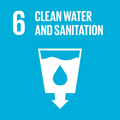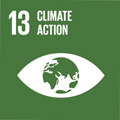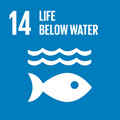- Docente: Massimo Ponti
- Credits: 6
- SSD: BIO/07
- Language: English
- Moduli: Massimo Ponti (Modulo 1) Andrea Pasteris (Modulo 2) Federica Costantini (Modulo 3)
- Teaching Mode: In-person learning (entirely or partially) (Modulo 1); In-person learning (entirely or partially) (Modulo 2); In-person learning (entirely or partially) (Modulo 3)
- Campus: Ravenna
- Corso: Second cycle degree programme (LM) in Science and Technologies for Environmental Sustainability (cod. 6055)
-
from Mar 19, 2025 to Apr 10, 2025
-
from Apr 09, 2025 to May 07, 2025
-
from May 06, 2025 to May 28, 2025
Learning outcomes
Students will gain an overall understanding of the state of the coastal ecosystems, how they are affected bylocal and global anthropogenicdisturbancesand what are the ecological methods for their monitoring, management, and conservation. At the end of the course, students will know the main marine coastal ecosystems, their associated communities, and the functions of these systems. They will learn to implement bioassessment methods and the integrated approaches to monitor these ecosystems. Finally, they will gain knowledge on the principles of conservation biology, on threats to marine biodiversity, and the ecological approaches to conserve it.
Course contents
Module 1: Structure and process of coastal ecosystems (Prof. Massimo Ponti)
The lectures will cover a variety of coastal habitats (e.g., intertidal and subtidal rocky bottoms, estuaries and coastal lagoons, seagrass meadows, biogenic reefs, artificial habitats). For each habitat we be analysed:-
environmental characteristics
-
main communities, their structure and distribution
-
main ecological processes and functioning, with emphasis on experimental work focusing on some particularly well studied processes
Module 2: Ecological methods for monitoring coastal ecosystems (Prof. Andrea Pasteris)
Environmental biomonitoring: definition, objectives, possible approaches.Status of surface, transitional and coastal water according to the EU Water Framework Directive.
Chemical status and environmental quality standards.
Toxicity testing and toxicity values as tools for the setting of environmental quality standards.
Different approaches for the setting of environmental quality standards
Ecological status: biological, hydromorphological, physico-chemical quality elements.
The reference condition and the development of bioassessment methods: study cases.
Toxicity tests as tools for environmental biomonitoring.
Module 3: Biological conservation of coastal ecosystems (Prof. Federica Costantini)
The structural levels of biodiversity, from the molecular to the ecosystem and their conservation.
Threats to biodiversity (fragmentation and loss of habitats, climate change, over-exploitation of resources).
Introduced species and invasive species.
Extinctions (types and causes). Endangered species threatened with extinction.
Measures for the conservation of the marine environment (monitoring, design and management of marine protected areas), in-situ conservation of populations and species (design of management plans), ex-situ conservation of populations and species.
IUNC criteria for the definition of the risk status of a species, Red Lists as a Conservation Instrument, CITES and control of international trade in species. Main international conventions and bodies for the protection of the sea and marine organisms.
Readings/Bibliography
-
Bertness et al. (Editors) 2013 Marine Community Ecology and Conservation. Sinauer Associates Inc. 560 pp. ISBN-13: 978-1605352282
-
Introduction to conservation biology - 2016 - Richard B Primack; Anna Sher Sunderland, MA, U.S.A. : Sinauer Associates, Inc., Publishers,
-
A Primer of Conservation Genetics - 2004 - Frankham, R., Ballou, J., Briscoe, D., & McInnes, K.Cambridge: Cambridge University Press. doi:10.1017/CBO9780511817359
Specifically selected scientific papers will be provided.
Teaching methods
Frontal teaching and interactive discussion groups.
Assessment methods
The exam includes a preliminary written multiple-choice test and then the discussion of a case study chosen by the student taking inspiration from a scientific article relevant to the subject. The candidate must provide the teachers with the chosen title and article for their approval, at least 10 days before the exam. The discussion can be supported by images and graphs in MS Power Point or PDF.
The final grade is the average of the marks obtained in the written test and in the presentation.
The dates of the exams will be published on the almaesami website. Students can book for the exams exclusively using the methods provided by the online almaesami system.
Teaching tools
The teaching material (e.g., powerpoint presentations) will be made available on the e-learning platform of UNIBO.
Students who need compensatory tools for reasons related to disabilities or specific learning disorders (SLD) can directly contact the Service for Students with Disabilities (disabilita@unibo.it) and the Service for Students with learning disabilities (dsa@unibo.it) to agree on the adoption of the most appropriate measures.
Office hours
See the website of Massimo Ponti
See the website of Andrea Pasteris
See the website of Federica Costantini
SDGs



This teaching activity contributes to the achievement of the Sustainable Development Goals of the UN 2030 Agenda.
